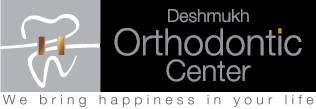

CANCER CARE
Oral cancer or mouth cancer, a subtype of head and neck cancer, is any cancerous tissue growth located in the oral cavity. It may arise as a primary lesion originating in any of the oral tissues or by metastasis from a distant site of origin, or by extension from a neighboring anatomic structure, such as the nasal cavity. There are several types of oral cancers, but around 90% are squamous cell carcinomas, originating in the tissues that line the mouth and lips. Oral or mouth cancer most commonly involves the tongue. It may also occur on the floor of the mouth, cheek lining, gingiva (gums), lips, or palate (roof of the mouth). Cancer is the result of uncontrolled cell growth. Every cancer is unique and has its own properties of growth and genetic changes. Oral cancer ranks 11th in frequency and 13th in cancer specific mortality. 5 year survival for localized malignancy is 76%. 5 year survival for metastatic malignancy is 19%.
Who is at risk?
- Young and middle aged adults with habits
- Potentially Malignant Disorders
- Immunosuppression
- HPV infections
- Previously diagnosed cases

TYPICAL CANCER SIGNS

Pre-Cancer
Oral cancer is sometimes preceded by clinically visible lesions which are non cancerous to begin with. Not all precancerous lesions progress to cancer, nor all cancers necessarily originate from such lesions.
These lesions are clinically recognizable and provide an important opportunity for intervention in the prevention of oral cancer. Diagnosing these at an early stage will help us in preventing the bigger cancer also at an early stage.

Cancer
POSSIBLE WARNING SIGNS
- Non healing ulcer of the oral cavity.
- Lump or thickening of oral soft tissue.
- Soreness or “lump” in throat.
- Difficulty in chewing or swallowing.
- Difficulty moving jaw or tongue.
- Swelling of the jaw.
- Numbness of tongue or mouth.
- Hoarseness or Ear pain.
EXFOLIATIVE CYTOLOGY

Oral CDx

Diagnosis
Approaches to early detection of Oral Precancer & Cancer
- Oral cancer screening program that identifies asymptomatic patients with suspicious lesions.
- Employing specially designed tools to identify precancer and early oral cancer in asymptomatic patients with oral abnormality.
EXFOLIATIVE CYTOLOGY
EXFOLIATIVE CYTOLOGY is simply scrapping of the superficial tissue of the suspected area and observing it under the microscope. A non-invasive, in expensive and easy procedure for early detection.
Oral Brush Biopsy (Oral CDx)
- Oral CDx identifies ABNORMALITIES in common spots that often have no suspicious clinical features.
- Sensitivity and specificity well over 90%
Counseling and Treatment Modalities
PERSONAL COUNSELING
We make a sincere effort to understand the patients need to use tobacco.
The patient will be helped and advised by various methods on a regular basis until the patient reduces the frequency of the habit substantially.
The patient is helped and advised to quit the use of tobacco in any form, to achieve this various innovative methods are utilized.
AGENTS WHICH HELPS IN QUITTING TOBACCO HABIT
NICOTINE GUM
- Delivers small dose of nicotine via chewing gum.
- This method also helps the patient psychologically as the patient is used to having something in the mouth.
NICOTINE PATCHES
- This method becomes most effective when combined with other medication and psychological support.
- This method also helps the patient psychologically as the patient is used to having something in the mouth.
NICOTINE LOZENGES
- Acts better when used in conjunction with nicotine patches.
- This method also helps the patient psychologically as the patient is used to having something in the mouth.




